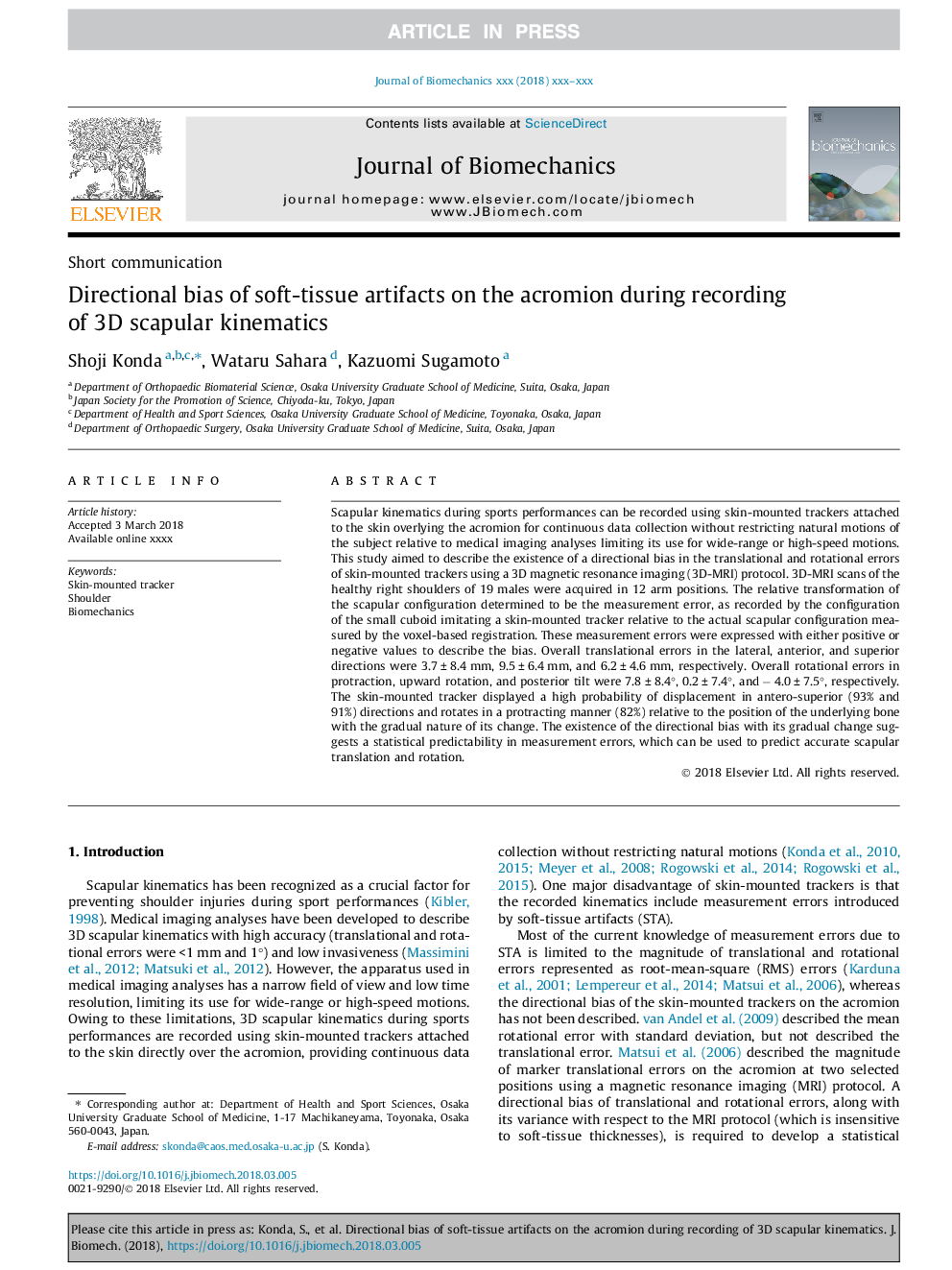| کد مقاله | کد نشریه | سال انتشار | مقاله انگلیسی | نسخه تمام متن |
|---|---|---|---|---|
| 7236196 | 1471091 | 2018 | 6 صفحه PDF | دانلود رایگان |
عنوان انگلیسی مقاله ISI
Directional bias of soft-tissue artifacts on the acromion during recording of 3D scapular kinematics
دانلود مقاله + سفارش ترجمه
دانلود مقاله ISI انگلیسی
رایگان برای ایرانیان
کلمات کلیدی
موضوعات مرتبط
مهندسی و علوم پایه
سایر رشته های مهندسی
مهندسی پزشکی
پیش نمایش صفحه اول مقاله

چکیده انگلیسی
Scapular kinematics during sports performances can be recorded using skin-mounted trackers attached to the skin overlying the acromion for continuous data collection without restricting natural motions of the subject relative to medical imaging analyses limiting its use for wide-range or high-speed motions. This study aimed to describe the existence of a directional bias in the translational and rotational errors of skin-mounted trackers using a 3D magnetic resonance imaging (3D-MRI) protocol. 3D-MRI scans of the healthy right shoulders of 19 males were acquired in 12 arm positions. The relative transformation of the scapular configuration determined to be the measurement error, as recorded by the configuration of the small cuboid imitating a skin-mounted tracker relative to the actual scapular configuration measured by the voxel-based registration. These measurement errors were expressed with either positive or negative values to describe the bias. Overall translational errors in the lateral, anterior, and superior directions were 3.7â¯Â±â¯8.4â¯mm, 9.5â¯Â±â¯6.4â¯mm, and 6.2â¯Â±â¯4.6â¯mm, respectively. Overall rotational errors in protraction, upward rotation, and posterior tilt were 7.8â¯Â±â¯8.4°, 0.2â¯Â±â¯7.4°, andâ¯ââ¯4.0â¯Â±â¯7.5°, respectively. The skin-mounted tracker displayed a high probability of displacement in antero-superior (93% and 91%) directions and rotates in a protracting manner (82%) relative to the position of the underlying bone with the gradual nature of its change. The existence of the directional bias with its gradual change suggests a statistical predictability in measurement errors, which can be used to predict accurate scapular translation and rotation.
ناشر
Database: Elsevier - ScienceDirect (ساینس دایرکت)
Journal: Journal of Biomechanics - Volume 73, 17 May 2018, Pages 217-222
Journal: Journal of Biomechanics - Volume 73, 17 May 2018, Pages 217-222
نویسندگان
Shoji Konda, Wataru Sahara, Kazuomi Sugamoto,